On the journey of refining our products, Carbonstop never stops. To continuously improve the user experience of ourone-stop carbon management platform — Carbon Cloud, after considering the product's own development and gathering numerous core requirements, the new Carbon Cloud Enterprise Carbon Accounting V2.0 is now available. Let's experience the superior features together.

User Interface Completely Upgraded, Functional Modules More Clearly Defined
This upgrade to version 2.0 provides customers with a brand-new operation interface. Functions such as data quality management, emission management, reduction management, and report management are presented in separate modules, supporting independent management and invocation. Data classification is clearer, and internal division of labor for enterprise carbon management is more defined.
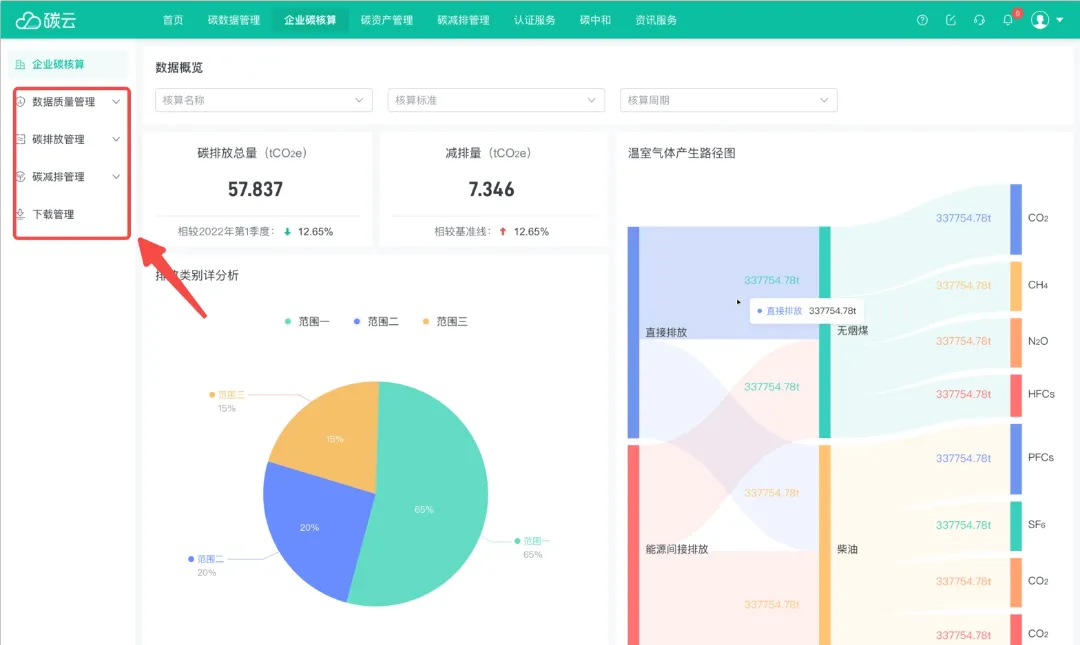
▲ Image / Overview of Enterprise Carbon Accounting 2.0 Data

One-Click Import of Activity Data for Smoother Filling
Enterprise Carbon Accounting in the new version introduces the [One-Click Import] feature. This function supports users to import their greenhouse gas inventory data into the system with one click, followed by flexible matching through built-in calculation models, perfectly solving the problems of data collection and selection of factors. With better tools at hand, efficiency naturally takes off.

▲ Image / One-Click Import of Activity Emission Sources
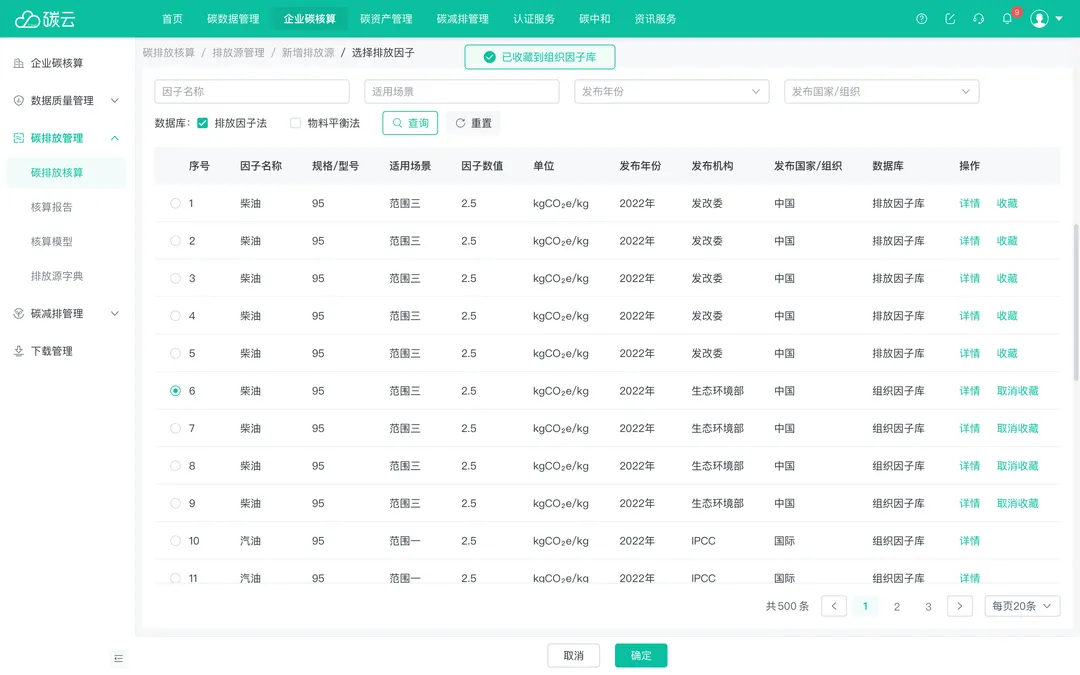
▲ Image / Selecting Emission Factors

Mastering Calculation Models, Customization at Your Command
With the increasing coverage of carbon accounting across different industries, this upgrade now supports the selection of calculation models by industry, meeting users' personalized needs and allowing for custom calculation models, greatly enhancing the operational experience and efficiency in completing carbon emission accounting.
Notably, the new version of Enterprise Carbon Accounting adds the[Template Reuse] feature, enabling templates generated after accounting to be shared with different accounts within the same organization, achieving multi-end and multiple reuse of a single template, thus improving overall accounting efficiency.
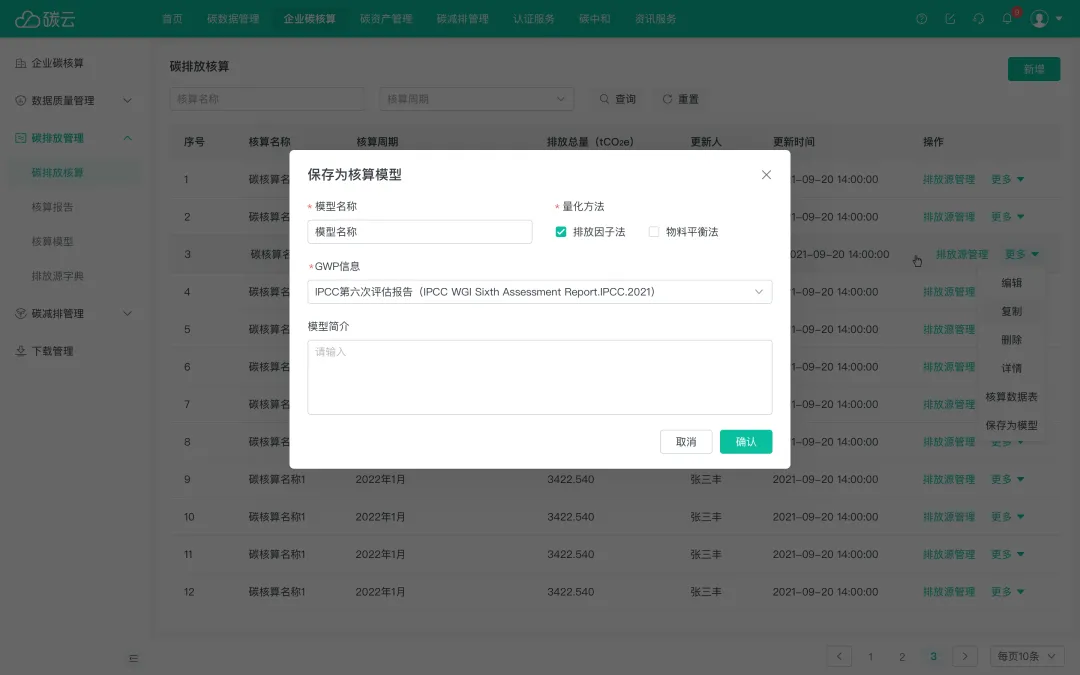
▲ Image / Calculation Models Can Be Saved
Moreover, the model includes enterprise emission sources and corresponding factor data, requiring users to fill in activity data according to the actual situation of the enterprise, such as electricity usage, employee travel, commuting, etc., significantly lowering the entry barrier.
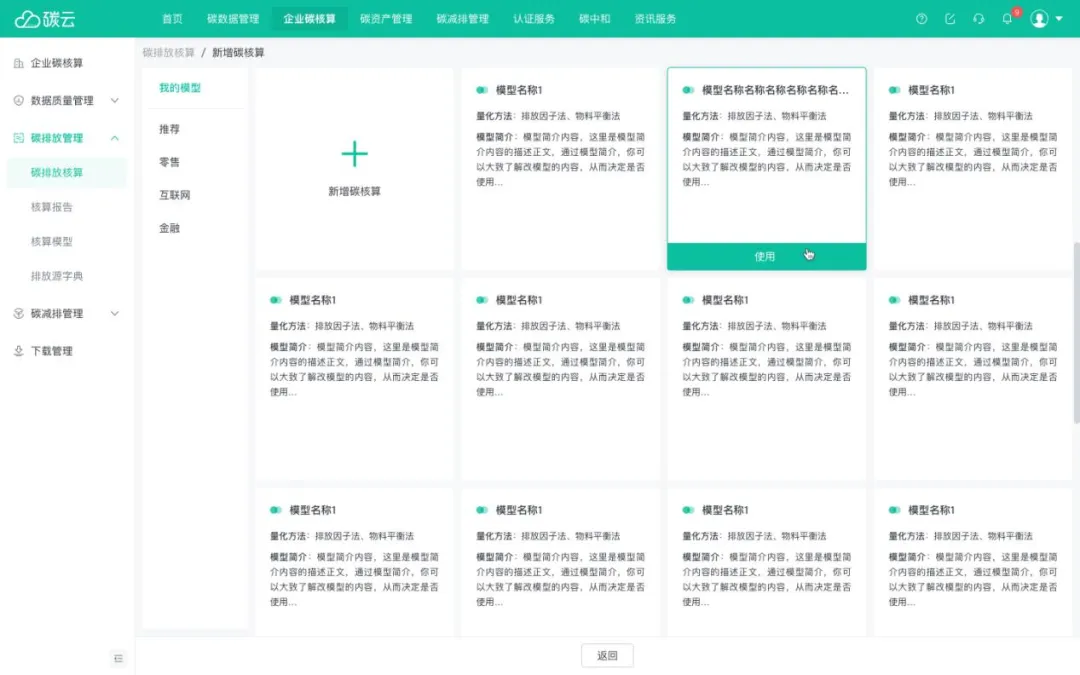
▲ Image / Saved Calculation Models Can Be Reused

Building Your Own Emission Source Dictionary Like Playing with LEGO
Throughout the entire carbon accounting process, due to the multitude and complexity of emission sources, identifying them often leaves enterprises feeling lost and exhausted. For this reason, the new version of Enterprise Carbon Accounting adds the[Emission Source Dictionary] to assist enterprises in overcoming challenges during emission source identification.
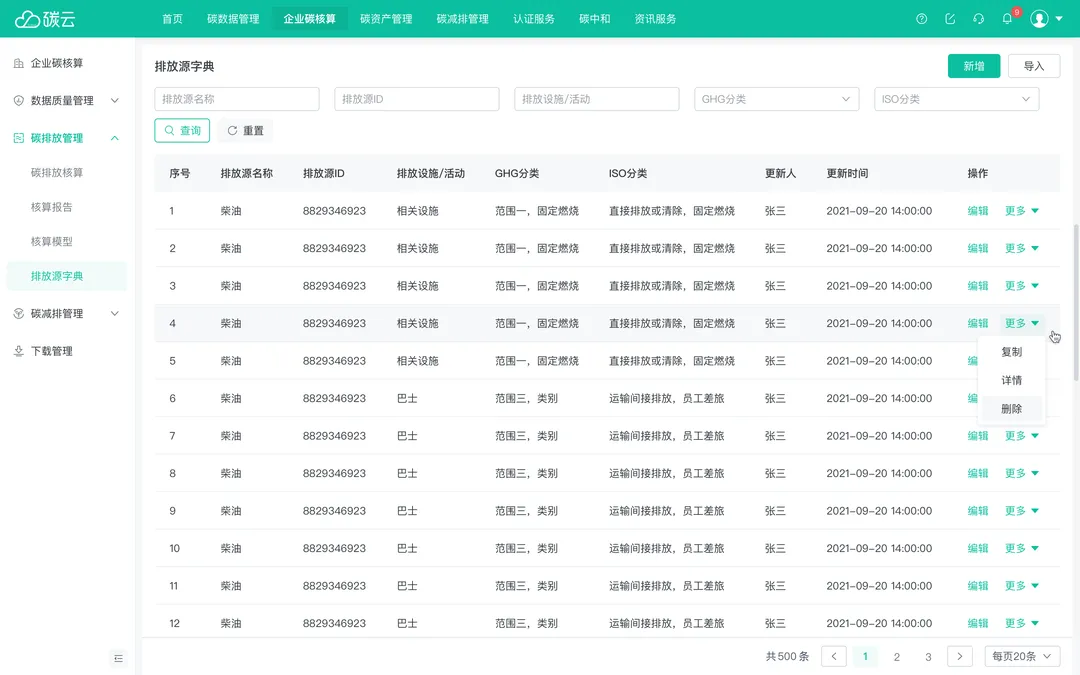
▲ Image / Emission Source Dictionary
What is an emission source dictionary? Simply put, it organizes and records the emission source data used by enterprises in the form of accounting units,creating a standardized system recognized uniformly by various business departments within the enterprise, much like playing with LEGO bricks. When arriving at the 'Select Emission Source' step again, users can directly use the data from the dictionary, enhancing the overall accounting efficiency of the organization. At the same time, it provides a data foundation for statistical analysis of carbon emissions based on emission sources.
Typically, a complete accounting unit should include basic information about the emission source, activity data information, emission factors, and evaluation information of the emission factors.
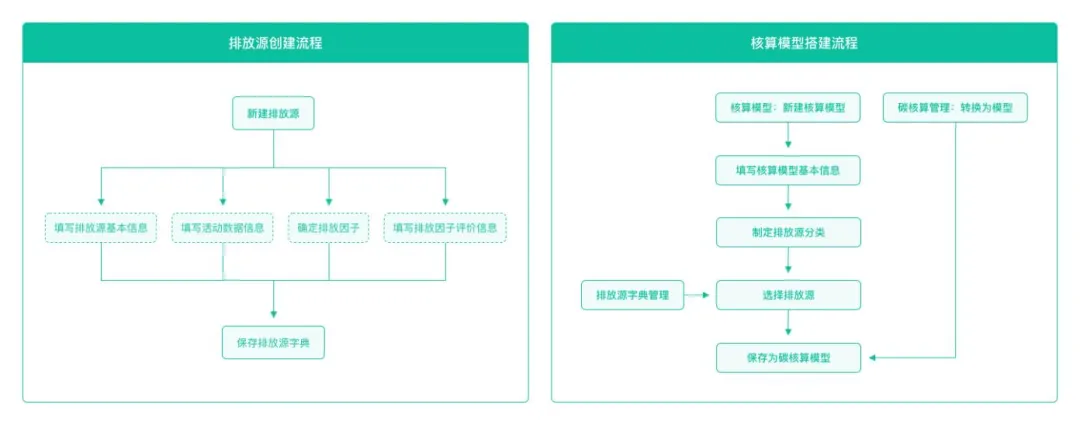
▲ Image / Creation Process of Emission Sources, Building Process of Calculation Models

Support for Flexible Switching Between GHG Protocol and ISO 14064
Without standards, there is no rule. The unified reference standards for enterprises to calculate carbon emissions are the GHG Protocol and ISO 14064. In addition to being compatible with both standards, Enterprise Carbon Accounting V2.0 supports flexible selection of standards under specific scenarios. When generating reports, users can choose the standard referenced by the report as needed,achieving one-time filling and instant switching between two standards, while adding the[Report Summary] feature, allowing users to generate reports according to their needs for external disclosure.
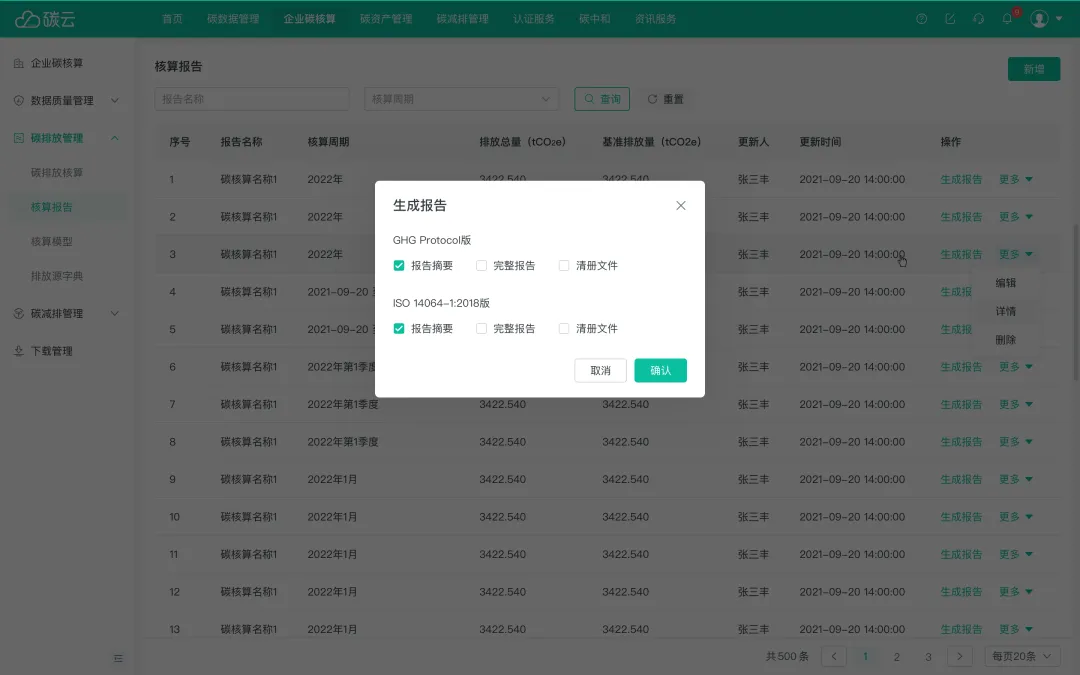
▲ Image / Report Summary Feature

New Reduction Management Features for Full-Cycle Reduction Management
Accounting is not the ultimate goal; reduction is the 'final battle.' Based on this, Enterprise Carbon Accounting 2.0 supportsone-click linking of baseline year carbon emission data, allowing enterprises to clearly understand annual changes in carbon emissions and reduction effectiveness. It also supports users tomanage reduction projects/scenarios within the organization and download carbon reduction reports, forming a complete carbon reduction management cycle. This ensures that enterprises 'calculate' accurately and 'manage' comfortably.
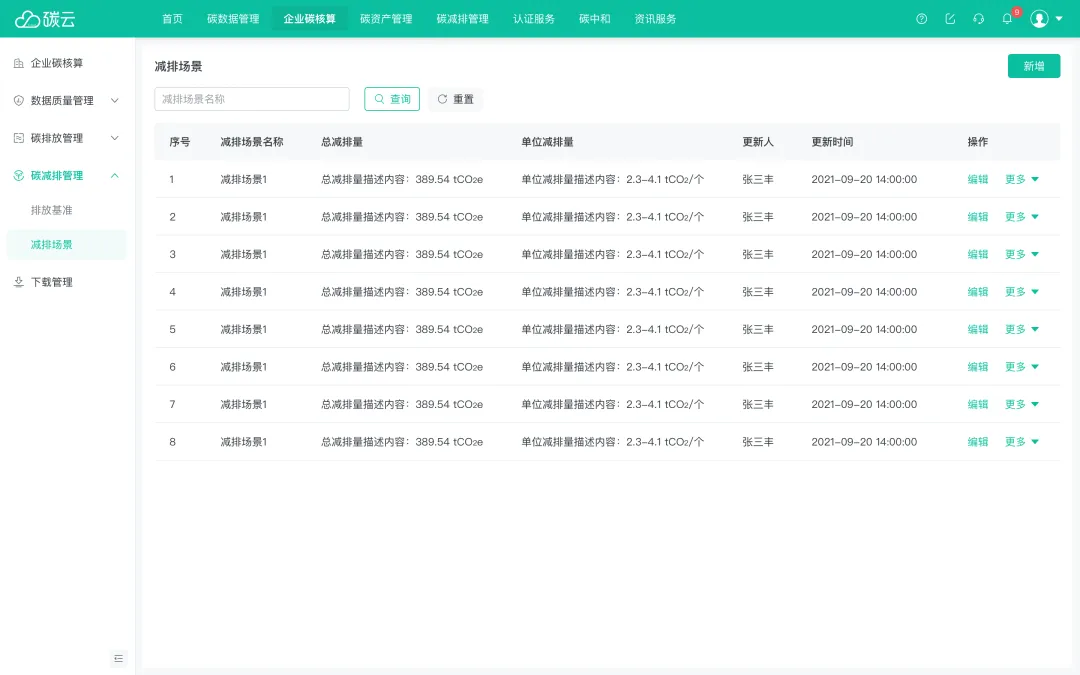
▲ Image / Reduction Management Function
Accumulating small steps leads to a thousand miles.Always starting with the vision of 'letting every product have a carbon footprint,' Carbonstop is committed to innovation-driven improvements through data, technology, and innovation, providing enterprises with better carbon management experiences. This upgrade to Enterprise Carbon Accounting 2.0 further refines the product's standard functions, achieving intelligent and efficient data entry, accounting, emission source management, and carbon reduction management, marking another solid step towards transforming the enterprise carbon management experience.






